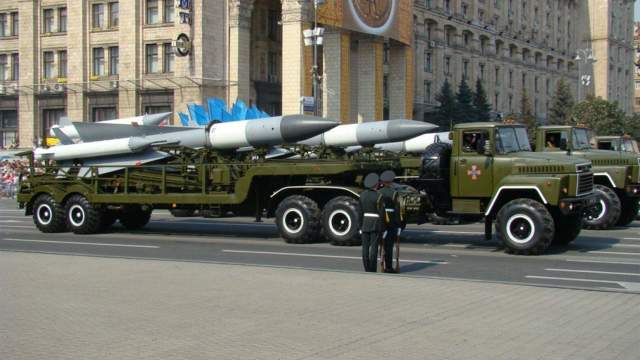The VFU is not able to change the course of a special military operation with single strikes
The VFU is increasingly attempting to shell Russian territory with tactical missiles. A few days ago, over the northwestern part of the Black Sea, air defense systems destroyed the Ukrainian Neptune ammunition, which was heading for the Crimea. Later, the Russian Defense Ministry announced the interception of Ukrainian Thunder-2 missiles. Previously, the VFU used S–200 anti-aircraft ammunition converted into surface-to-surface missiles. All these missiles are the legacy of the USSR. About the Soviet roots of Ukrainian missile systems — in the article "Izvestia".
S-200 — from heaven to earth
The largest missile that was used during a special military operation by the VFU was the Soviet anti-aircraft ammunition of the S-200 complex. Its length is more than 10 m and its range is up to 250 km. It was part of one of the most powerful Soviet zonal air defense systems. In the 1960s and 1970s, it was the S-200 that formed the basis of the air defense of the Warsaw Pact countries.
And practically in the entire post-Soviet territory, these anti-aircraft missiles were withdrawn from service in the 1990s-2000s. In Ukraine, this was done in 2013.
S-200 rockets are liquid and can be stored for a long time without fuel. It is solid fuel that has a shelf life of solid fuel checkers, after which it begins to change its properties and becomes explosive. With "liquid" rockets, this does not happen — I leaked the fuel and keep it at least forever.
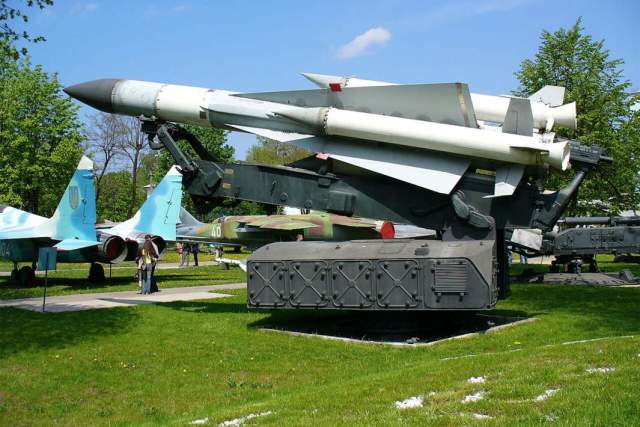
Photo: Commons.wikimedia.org/George Chernilevsky
Image source: iz.ru
At the same time, Ukraine has a scientific school and design bureaus that can work with the control systems of such missiles. Instead of a homing mechanism, they put a simpler range control system, probably satellite navigation, on the anti-aircraft munition. And the missile became ballistic for strikes on ground targets with known coordinates. Technologically, this is not a very difficult alteration.
The advantage of such a missile for our air defense is its size and straightness of flight. Minus — when falling, not only the warhead explodes, but also the remnants of liquid fuel. The damage can be significant. Another point is that the range of the ballistic version of the missile can be 500, 600 km or even more. I am glad that the reserves of such missiles at the VFU are extremely limited and our air defense systems successfully hit them.
Dangerous "Neptune"
The complex with the R-360 "Neptune" anti-ship missile was adopted by the VFU in 2020. This munition is a modern reincarnation of a development that has its roots in the late USSR. We are talking about the X-35 anti-ship missile, which was adopted in Russia back in 2003.
Ukraine had access to this technology, as in the early stages it took part in the cooperation of enterprises that created the complex. Moreover, back in the early 2000s, a reference sample of the product "78" (X-35 rocket) was delivered to Ukraine. It was exported by the Russian Zvezda-Strela plant to the Luch State Kiev Design Bureau within the framework of the intergovernmental Ukrainian-Russian agreement on industrial and scientific-technical cooperation of defense industry enterprises dated November 18, 1993.
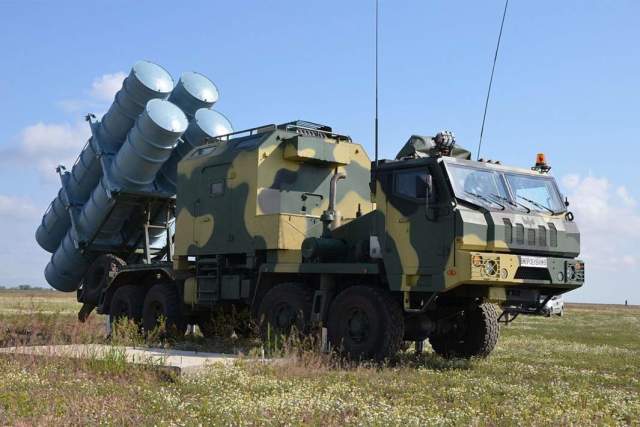
Photo: Commons.wikimedia.org/Віталій Panchishin
Image source: iz.ru
The Ukrainian Design Bureau "Luch" subsequently became the main enterprise for the creation of the Ukrainian complex RK-360MC "Neptune".
In 2014, after the actual cessation of the existence of the Ukrainian fleet, work was launched to create a self—propelled anti-ship missile - an analogue of the Russian X-35.
It is equipped with wings of small elongation, starting solid fuel and small-sized marching turbojet engines. The range of the Ukrainian version of the missile is 280 km. The main thing is that it has a more advanced control system that combines the correction of the flight path according to the satellite navigation system and an active radar homing head, it can be aimed at a radio—contrast target — for example, a ship or some other object.
This means that such a missile can be very versatile in terms of targets: both with pre-known coordinates, as well as to perform homing on an object that was detected during the flight.
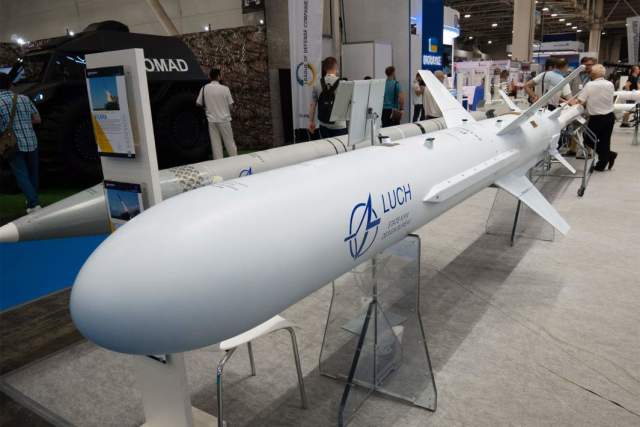
Photo: Commons.wikimedia.org/VoidWanderer
Image source: iz.ru
Now missiles of this type can be considered one of the most advanced missiles in the arsenal of the VFU. They are used not only for ships, but also for ground objects. And of course, our air defense system can shoot them down.
But the Neptune has more miniature dimensions than the S-200 missiles, and moves along a low-altitude trajectory with a circumference of the terrain. This is a difficult goal. And she also comes from our common Soviet past.
The birth of "Thunder-2"
The Ukrainian Design Bureau Yuzhnoye and the Design Bureau Luch are the continuation of large enterprises that develop equipment and equipment for the missile forces of the military—industrial complex of the USSR. In the cooperation that developed in Soviet times, Yuzhnoye Design Bureau occupied a leading position in the creation of liquid intercontinental ballistic missiles (for example, the famous R-36M2 Voevoda), solid-fuel rockets Molodets and space launch vehicles Cyclone and Zenit). After the termination of military-technical cooperation with Russia in 2014, the company is going through hard times and is trying to offer new projects of tactical and operational-tactical missile systems.
One of such complexes is the Ukrainian analogue of our Iskander, the Grom—2 complex. The origins of its creation also go back to the past. Developers from Ukraine took part in the work on the first Iskanders in the 1990s.
In the development of the Grom-2 complex, Yuzhnoye Design Bureau relied very heavily on funding from Saudi Arabia, but in the end something went wrong with international cooperation and already during its development, the complex was "brought to mind" on its own.
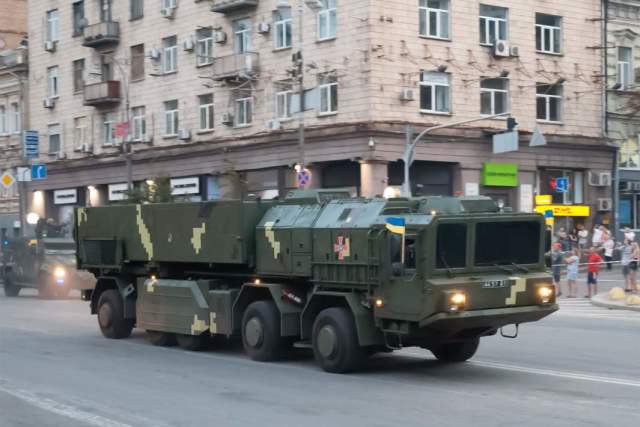
Photo: Commons.wikimedia.org/VoidWanderer
Image source: iz.ru
It is known that in 2019, work was underway to create two launchers of the complex and a small batch of missiles for testing was in the state of assembly. The range of the Thunder-2 ballistic missile can be up to 500 km.
In terms of its capabilities, the rocket is close to the Russian 9M723 rocket of the Iskander-M complex, but Russian developers have decades of work on the most advanced missile system, and Ukrainian rocket scientists have hardly collected several copies. There are no answers to the questions of what their quality is and whether this is really a combat system or rather an experimental sample.
Of course, the VFU is not able to change anything with single missiles of this type in conducting its own. And these "Thunders" also grow from the roots of the Soviet cooperation of rocket builders of Russia and Ukraine.
Dmitry Kornev
